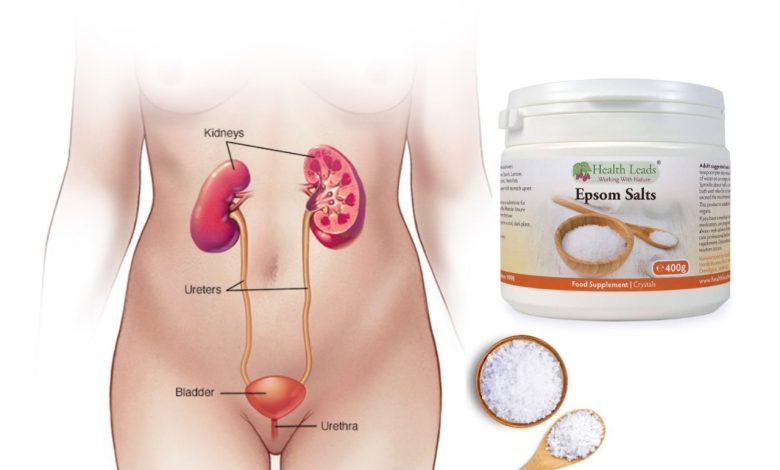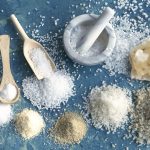Is Epsom Salt Baths Good for UTI’s

Urinary tract infections (UTIs) can be uncomfortable and disruptive, prompting individuals to seek relief from various remedies. Epsom salt baths have gained attention as a potential solution for UTI symptoms, but do they really offer relief?
In this article, we’ll explore the evidence behind the use of Epsom salt baths for UTIs and whether they can provide any benefits.
Understanding Urinary Tract Infections (UTIs)
Before delving into the potential benefits of Epsom salt baths, let’s briefly review UTIs. A urinary tract infection (UTI) is an infection that occurs anywhere in the urinary system, which includes the kidneys, ureters, bladder, and urethra. UTIs are commonly caused by bacteria, though other pathogens such as fungi or viruses can also be responsible. The vast majority of UTIs are caused by bacteria, with Escherichia coli (E. coli) being the most common culprit.
UTIs are more prevalent in women than in men, primarily due to anatomical differences. Women have shorter urethras than men, making it easier for bacteria to reach the bladder and cause infection. Factors that increase the risk of developing a UTI include:
1. Female anatomy: Women are more susceptible to UTIs due to their shorter urethras, which allow bacteria to enter the bladder more easily.
2. Sexual activity: Sexual intercourse can introduce bacteria into the urinary tract, increasing the risk of infection.
3. Use of certain types of birth control: Diaphragms and spermicidal agents can increase the risk of UTIs in some women.
4. Menopause: Decreased estrogen levels after menopause can lead to changes in the urinary tract that increase the risk of infection.
5. Urinary tract abnormalities: Structural abnormalities or blockages in the urinary tract can make infections more likely.
6. Catheter use: Indwelling urinary catheters, commonly used in hospitalized patients or those with urinary retention, can introduce bacteria into the bladder and increase the risk of infection.
7. Diabetes: People with diabetes may have a compromised immune system, making them more susceptible to infections, including UTIs.
Symptoms of a UTI may include:
1. Pain or burning sensation during urination
2. Frequent or urgent need to urinate
3. Cloudy or strong-smelling urine
4. Blood in the urine (hematuria)
5. Pelvic pain in women
6. Rectal pain in men
UTIs are relatively common, particularly among women. According to the National Institute of Diabetes and Digestive and Kidney Diseases (NIDDK), approximately 50% to 60% of women will experience at least one UTI in their lifetime, with many experiencing recurrent infections. UTIs are less common in men, but they can still occur, especially in older men or those with underlying urinary tract abnormalities or conditions such as an enlarged prostate.
UTIs are bacterial infections that can affect any part of the urinary tract, including the kidneys, bladder, ureters, and urethra. Common symptoms include a frequent and urgent need to urinate, pain or burning during urination, cloudy or bloody urine, and pelvic discomfort.
What is Epsom Salt?
Epsom salt, scientifically known as magnesium sulfate, is a naturally occurring compound that has been used for centuries as a folk remedy for various ailments. Despite its name, Epsom salt is not actually a salt but rather a mineral compound composed of magnesium, sulfur, and oxygen. It is known for its purported therapeutic properties, including muscle relaxation, pain relief, and skin-soothing effects.
Potential Benefits of Epsom Salt Baths for UTIs
Proponents of Epsom salt baths for UTIs suggest that the magnesium and sulfate ions in the salt may have therapeutic effects on the urinary tract. Let’s delve deeper into these potential benefits and explore the mechanisms by which Epsom salt baths could provide relief for UTI symptoms.
1. Magnesium’s Muscle-Relaxing Properties: Magnesium is an essential mineral involved in various physiological processes in the body, including muscle function and relaxation. One of the proposed benefits of Epsom salt baths for UTIs is the ability of magnesium ions to relax the muscles of the urinary tract, thereby alleviating pelvic discomfort and pain associated with UTIs.
Muscle spasms and tension in the pelvic region can contribute to the discomfort experienced during UTIs. By soaking in a warm bath containing Epsom salt, individuals may experience relaxation of the pelvic muscles, which can provide relief from pain and discomfort. The warmth of the water itself can also help soothe sore muscles and promote relaxation, contributing to an overall sense of well-being.
2. Antimicrobial Properties of Sulfate Ions: In addition to magnesium, Epsom salt baths contain sulfate ions, which proponents suggest may have antimicrobial properties that could help inhibit the growth of bacteria in the urinary tract. While the antimicrobial effects of sulfate ions have not been extensively studied in the context of UTIs, some research suggests that sulfate ions may have potential as a topical antimicrobial agent.
Sulfate ions have been shown to have mild antiseptic properties and can help cleanse and disinfect the skin. It’s possible that these antimicrobial properties could extend to the urinary tract when Epsom salt baths are used, although more research is needed to confirm this hypothesis.
3. Warmth and Comfort of Bathing: Beyond the specific properties of Epsom salt, warm baths themselves can provide soothing relief for UTI symptoms. The warmth of the water can help improve blood circulation, reduce inflammation, and promote relaxation throughout the body, including the pelvic region. This can help alleviate discomfort and pain associated with UTIs, providing temporary relief while waiting for antibiotics to take effect.
Considerations and Precautions
While Epsom salt baths are generally considered safe for most individuals when used as directed, there are some considerations and precautions to keep in mind:
1. Consult with a Healthcare Professional: If you suspect you have a UTI, it’s essential to seek medical evaluation and treatment. Antibiotics are typically needed to effectively clear the infection and prevent complications. Epsom salt baths should not be used as a substitute for medical treatment.
2. Hydration: Drinking plenty of water is crucial for flushing bacteria out of the urinary tract. While Epsom salt baths may provide temporary relief, they should not replace adequate hydration as part of UTI management. Ensure you are drinking enough fluids to help support the body’s natural healing processes and maintain urinary tract health.
3. Skin Sensitivity: Some individuals may experience skin irritation or allergic reactions to Epsom salt baths. It’s advisable to perform a patch test before using Epsom salt in the bath and to discontinue use if any adverse reactions occur. Additionally, individuals with sensitive skin or certain skin conditions should consult with a dermatologist before incorporating Epsom salt baths into their routine.
4. Magnesium Absorption: While some proponents claim that magnesium can be absorbed through the skin during Epsom salt baths, research supporting this is limited. If you have concerns about magnesium levels or are taking medications that may interact with magnesium, consult with a healthcare professional before using Epsom salt baths. It’s important to note that the absorption of magnesium through the skin is generally considered to be minimal compared to oral supplementation.
Conclusion
While Epsom salt baths may offer temporary relief for UTI symptoms such as pelvic discomfort, their efficacy as a treatment for UTIs remains unproven. The primary treatment for UTIs is antibiotics, which are prescribed by healthcare professionals based on the severity of the infection and individual health factors. If you’re experiencing symptoms of a UTI, it’s essential to consult with a healthcare professional for proper diagnosis and treatment. While Epsom salt baths can be a soothing addition to self-care routines, they should not be relied upon as a sole treatment for UTIs. As with any complementary therapy, it’s important to use Epsom salt baths judiciously and in conjunction with evidence-based medical treatments for UTIs.





